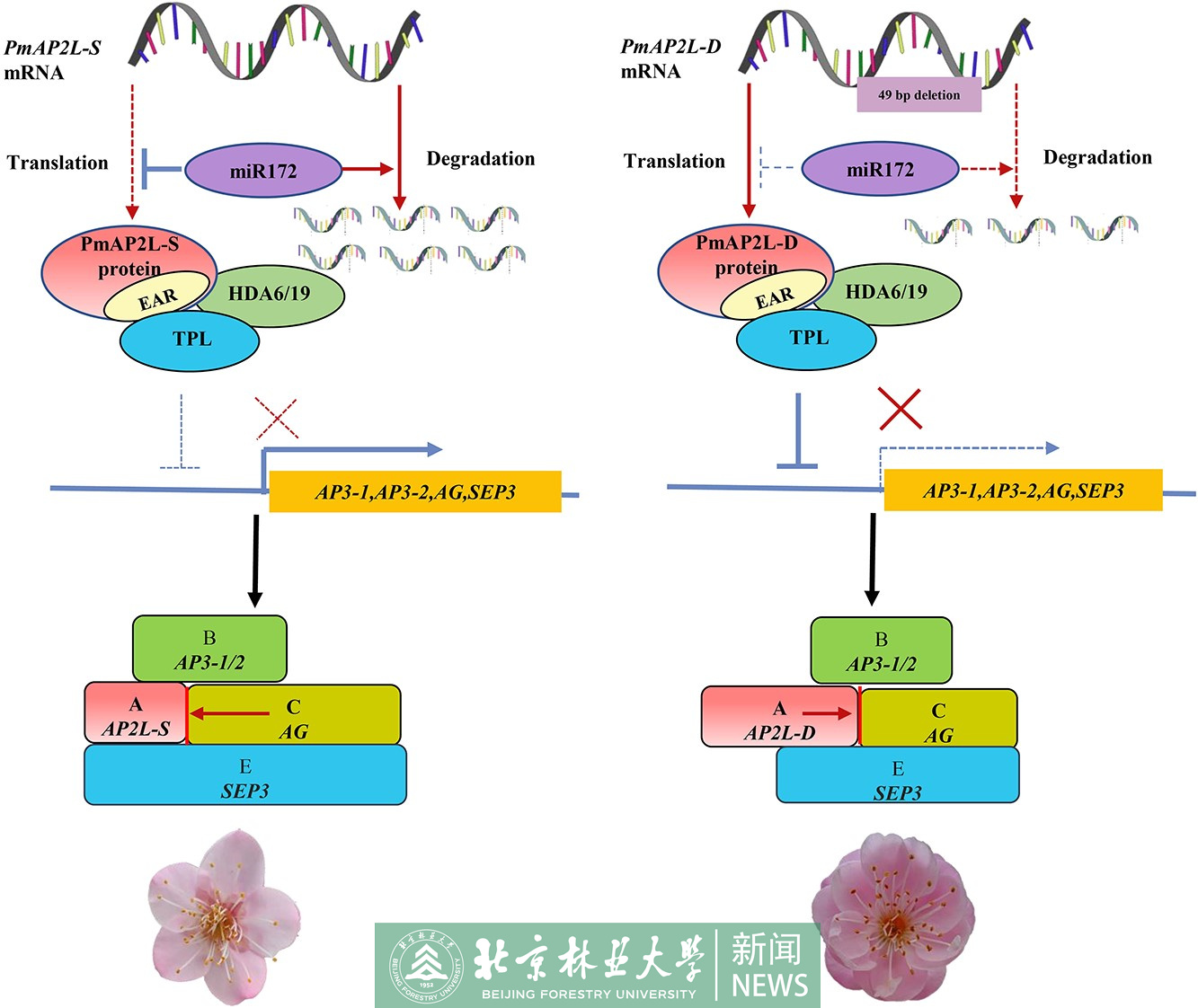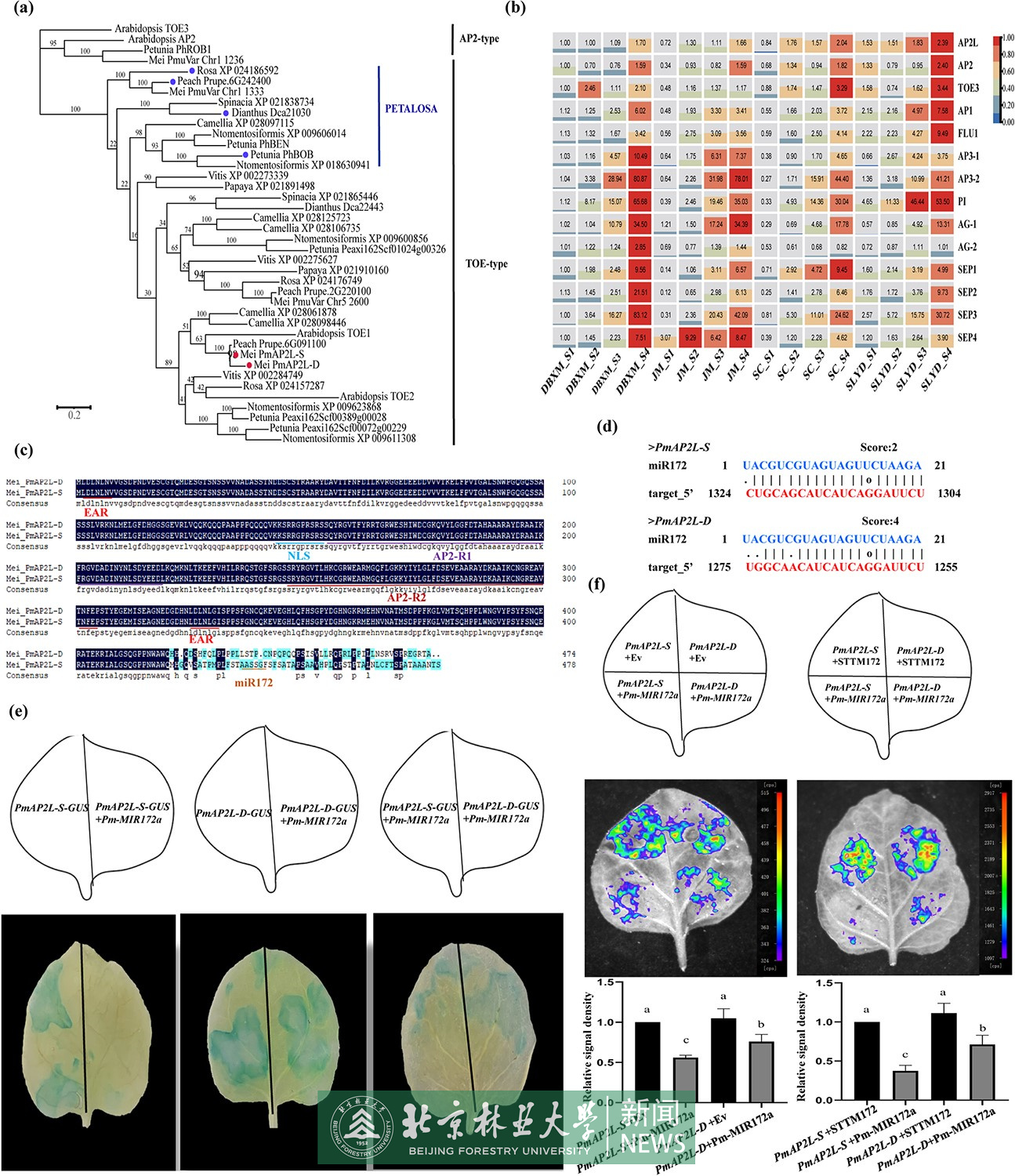Latest news
Recently, Professor Zhang Qixiang of the College of Landscape Architecture and his team published a research paper entitled "A 49-bp deletion of PmAP2L results in a double flower phenotype in Prunus mume" in the TOP journal Horticulture Research (IF=8.70). The investigation elucidated the identification of a novel gene, PmAP2L, and discovered a 49-base pair deletion within this gene, which is associated with the development of the double flower phenotype in Prunus mume. This discovery offers an innovative perspective for the cultivation of double-flowered Prunus mume and contributes to the broader comprehension of floricultural genetics, particularly in relation to the double-flower trait in ornamental plants.

The double flower is an important trait with substantial ornamental value. While mutations in PETALOSA TOE-type or AG (AGAMOUS) genes play a crucial role in enhancing petal number in ornamental plants, the complete mechanism underlying the formation of double flowers remains to be fully elucidated. Through the application of bulked segregant analysis (BSA), a novel gene, APETALA2-like (PmAP2L), characterized by a 49-bp deletion in double-flowered Prunus mume was identified. β-Glucuronidase (GUS) staining and luciferase reporter assays confirmed that the 49-bp deletion in PmAP2L reduced its binding with Pmu-miRNA172a. Phylogenetic analysis and microsynteny analysis suggested that PmAP2L was not a PETALOSA TOE-type gene, and it might be a new gene controlling the formation of double flower in P. mume. Subsequently, overexpression of PmAP2L-D in tobacco led to a significant rise in the number of stamens and the conversion of stamens to petals. Furthermore, silencing of the homologue of RC5G0530900 in rose significantly reduced the number of petals. Using transient gene expression in P. mume flower buds, we determined the functional differences between PmAP2L-D and PmAP2-S in controlling flower development. Meanwhile, DNA-affinity purification sequencing (DAP-seq), yeast hybrid assays and luciferase reporter assays indicated that PmAP2L negatively regulated the floral organ identity genes by forming a repressor complex with PmTPL and PmHDA6/19. Overall, these findings indicate that the variation in PmAP2L is associated with differences in the regulation of genes responsible for floral organ identity, providing new insights into the double-flower trait and double-flower breeding in plants.

Professor Zhang Qixiang and Associate Professor Zheng Tangchun from National Engineering Research Center for Floriculture, School of Landscape Architecture, Beijing Forestry Universit are the coresponding authors of the paper, and Ph. D Liu Weichao (a youth teacher from Henan Agricultural University) is the first author.
The research was supported by the Fundamental Research Funds for the Central Universities (No. QNTD202306), National Natural Science Foundation of China (No. 32371947, 32071816), Beijing High-Precision Discipline Project, Discipline of Ecological Environment of Urban and Rural Human Settlements and the Special Fund for Beijing Common Construction Project.
Link: https://academic.oup.com/hr/advance-article/doi/10.1093/hr/uhad278/7479884










